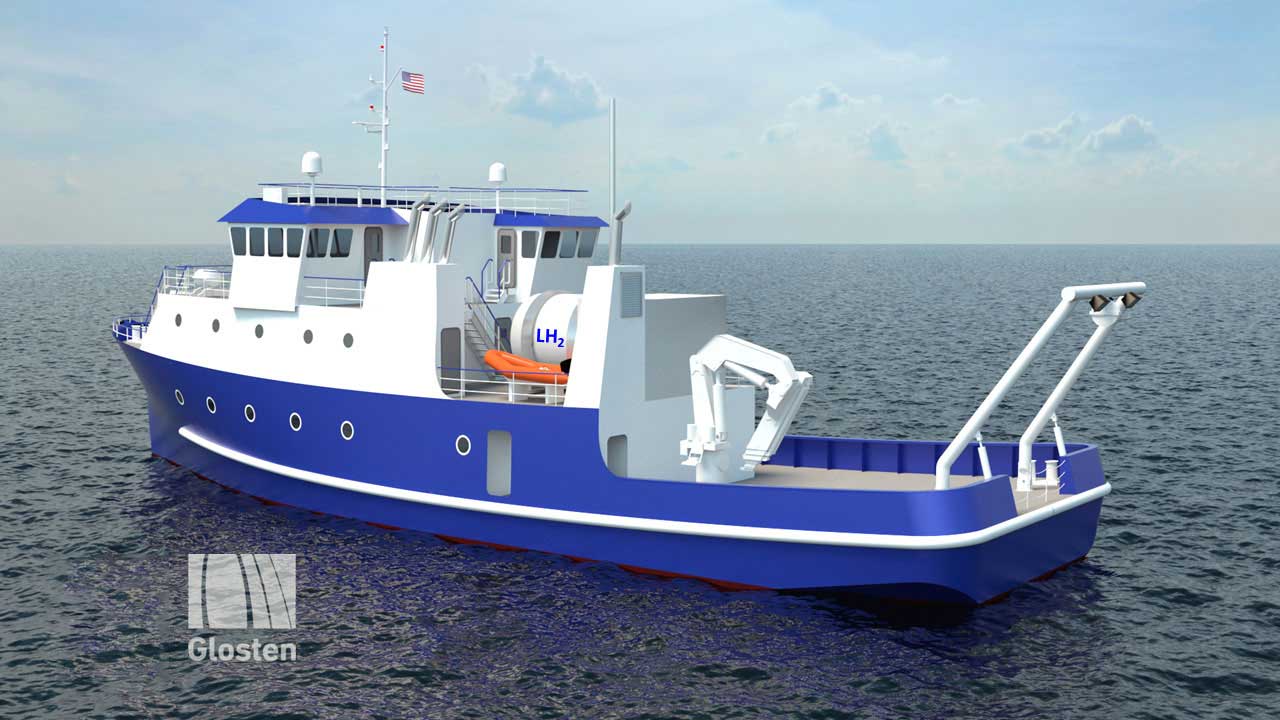
FUEL CELL FUTURE — An Engineering model of a new Scripps Institution of Oceanography research vessel that incorporates hydrogen fuel cells with a liquid hydrogen tank — labelled LH2. The vessel was conceived by Sandia, Glosten and Scripps, with the hydrogen fuel cell providing power for propulsion and energy for the ship’s systems (Photo courtesy of Glosten).
Sandia’s groundbreaking work to understand the wider applicability of zero-emission hydrogen fuel cells inspired Scripps Institution of Oceanography at U.C. San Diego to pursue State of California funding for a new research vessel that would use hydrogen hybrid technology to replace a ship in their aging fleet.
Sandia showed [us] “that non-polluting hydrogen fuel cells could be used in a maritime environment,” recounted Bruce Appelgate, Scripps’ associate director of Ship Operations & Marine Technical Support. For ocean research, using a hydrogen fuel-cell vessel instead of a diesel-fueled engine solves the problem of data corruption due to engine emissions and noise, allowing for better sample collection.
Lennie Klebanoff, Sandia CRF scientist, and his collaborators from Scripps and Glosten, designed a hydrogen hybrid vessel to be used for oceanographic research. Their model met Scripps’ fourteen science mission needs while satisfying the speed, stability, and other requirements of a high-performance research vessel.
In 2021, based on the team’s design, Scripps submitted a proposal to the State of California to fully design and build the hydrogen hybrid to replace their 40-year-old vessel, Sproul. The California Legislature voted to fund the project with $35 million, enabling the construction of the hydrogen hybrid research vessel.
See the full Sandia Lab News article